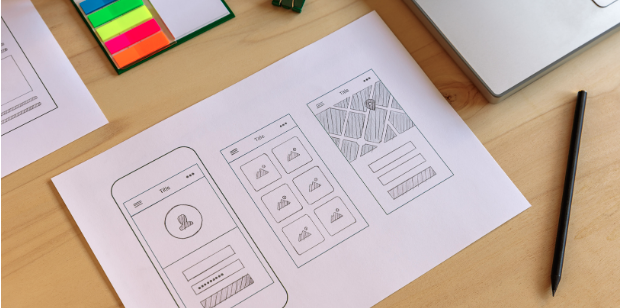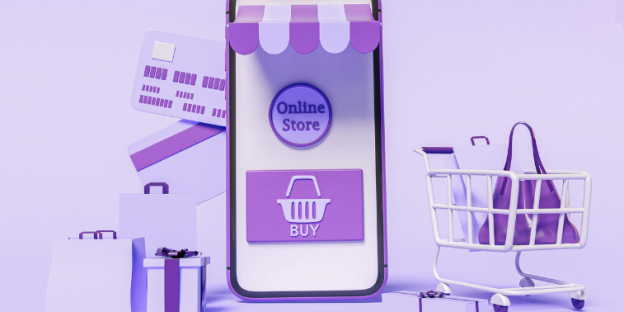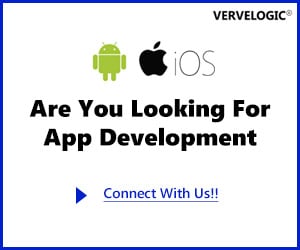Mobile App Onboarding Best Practices to Follow in 2020

Have you ever found it difficult to use apps and uninstalled within hours, why is it so happening. 77% of users drop an app within 72 hours of download and one among four mobile apps abandoned after their first launch.
Why the apps fail in attaining the highest rate even with great features sometimes, one reason is lack of understanding about apps and how it benefits on using. What is the solution, educate the user about the app, its features and how they work.
When it comes to educating each one who uses apps and who doesn’t is hectic, some research made and came up with the best solution of “On-Boarding” of the apps which help every user to know about the apps.
What is Mobile-App On-boarding ?
On-Boarding is a process of making users understand your application specification, and usage, benefits and compatibility of safety. So this gives the first impression of your app on user’s to proceed further.
Onboarding increases the app’s value, and enhances the customer engagement. According to analytics onboarding increased the customer practice over app by 50% then before practices.
App Onboarding helps in effective optimization of the first interaction to the user with application. This is the key to app success which helps in keeping the consistent user engagement.
What are the goals of app Onboarding ?
-> Introduction of product/application
-> Show how it works
-> Take some input to personalize
-> Get user to take core actions
-> Help in productivity of app’s success
-> Consistency in user engagement
Types of Mobile app Onboarding
-
Benefits Approach
Benefits is indirectly measuring the application value, what it brings for self improvement.
Telling people how is better than explaining why they need to use an app which increases the demand for apps if their need and why factors match.
It’s like spotlighting the app’s overall working user point view and making them realise the importance of the app in their life.
Exactly when to have this approach, once a user launches the app before signup with short contextual information to motivate them and to proceed through the app.
-
Feature Approach
It showcases the functionality of the application, which helps the user to understand the app based on features related that’s nothing but action of the application.
Which acknowledges the overview of the app, upfront the visualization of working of the application.
-
Interactive Approach
Interactive is two way communication with apps like in some websites when you open them you see a pop message with some help availability light chatbot or tapbot similarly in apps these features are available.
When you launch an app based on the application some provide AI integrated chat systems, and some apps provide quizzes along with suggestions.
So this helps users to find what they are looking for, and even suggestions might help them clearing the doubts about the apps.
-
Combination Approach
Some apps when you observe use a combination of benefit and feature approach which help users to understand the value and features in one go.
That reinforces the chances of retention of the app by users.
Best Practices for Mobile-app Onboarding
So far, we have seen an overview of onboarding, but if launching an app fails to advertise it to customers then it’s a waste of money, time and energy. In Order to hard-won the users commitment to the application they have to perform some best practices which expand the use of the application, let’s find some help with onboarding practices.
-
Emphasize the value of proposition
Moving the right card in the game you can win a jackpot similarly in the business of app development put-fronting the right information card you can reinforce the user’s attraction over the app.
Introduce the road blocker through swiping once you launch the app. This wont allow users to interact with apps or perform any actions, but it guides us through the values of apps performances.
Don’t bore the customer through so many slides and brief contextual explanations. Keep it simple and smart to be user -friendly.
Emphasizing the application should reflect the product’s strength and advantages that user’s expecting from the application.
-
Highlight Core Feature
People are so addicted to mobile apps now they know what they want when they are seeking through apps. So displaying the major features that highlights the application standard is so beneficial.
Mostly incase of the app store when you seek through a particular app you can have a peek at those information sectors, which explore the slides of important features with little description it follows the combination feature approach type.
-
Make walkthrough optional
Younger generation people are so impatient to go through the propositions of the app with guidelines. And 5 to 10% of people constantly work with apps so they don’t need a guide through. Giving the option to skip onboarding completely or a slide which they are familiar with helps to improve app reputation and user work with quick access directly.
-
Permission with Priming
The app with permission access from the mobile phone setting is one most security feature of app development. Pre-promoting the permission feature with contextual pop notification does increase the usage from the user?
The user’s are most fond of their security so while giving access to permission think a lot or sometimes ignore and that leads to reducing app usage. In order to avoid it pre-prompting of the pop notification which tells the user what this access does, helps the user to be clear to access the permission or ignore it.
Over all 82% of users say it’s somewhat too important to know why an app is asking for information like device permissions, payment info, or personal details. That’s more than 4 out of 5 mobile app users.
-
Use a Multiple Channels
It’s like getting a suggestion from the third person to redirect to your app. For example nowadays when you open a stand alone application and you have internet access you get a pop notification of the apps with recommendation.
This might give you the best way of onboarding the apps from previously using apps. That helps users to get little prior knowledge and they explore apps in order it increases the app rating.
In case phone pay it provides the usage access to some shopping apps which helps users to download them and use them. This process also helps in avoiding preposition addition.
-
Personalization of Importance
The way of customizing the app to precise the usage to the users with better quality and quantitative results, this practice adds the brand a competitive advantage over other apps.
Can give users a tailor-made experience directly in the on boarding procedure. For example in musical apps when searching some songs it provides a suggestion based on the personalized search option. Which provides better insight into choices.
-
Precise personal Information
Ask just the most important things,don’t waste the user’s time unnecessarily. As 60% of persons stop using or avoid installing the app when information asked is too much.
Don’t puzzle up with requests for accessing the personal data or device activities keep it precise with mandatory information accessibility.
-
Know the Right Moment Things
Basic things yet so effective over user concentration. There is such a thing like overstepping when it comes to permissions, grants, sensitive information and even tasks that require general effort from users.
The application should first allow the user to explore the things and make them familiar and build the trust to cope up with the app in future. So it’s better to ask them for access and information at the right moment.
This builds the user to carry on with the apps as they have full knowledge about how the app works and other required information and issues with compatibility.
-
Track Analytics
Keep track of each screen’s analytics, which helps to recognize which page or until where the navigation of the user has taken place. This helps in keeping track of the users who make it till the end of onboarding, who left in the middle and also it helps to find out errors or defects in the particular page.
Introducing success rate after every task of the user. The moment a user completes the important task it’s a good opportunity to create a connection with the app by declaring the success rate.
It acts as the celebration of the success of the user but it can be used as analytics to developers to keep track of the app.
-
Opt for Animation
Onboarding mainly lost for 10-15 seconds, that’s all got to impress the user so usage of animation could make a wide difference as it attracts people so easily.
This is creative and encourages the further interaction of users with the app. And its quite handy to introduce the features to users.
Compared to normal images which people are bored seeing, creating these animations as a short introduction of the app with simple descriptive mode adds up weight to the app. And in the competitive world, the best way to seek attention.
-
Offer a Demo Version
Majority of the apps we use in our daily life are signup/login apps which require the personal deatilsharing, and some of the users are not comfortable in sharing the personal details.so offer the user a demo version which avoids the signup or create account option still they can access through app and explore it, just like “test-drive” before buying a car.
For example as you can see flipkart, amazon which helps to search through products add them to cart and navigate through all features and explore but when it comes to buying the create account option pops up its safety for apps and users to be convenient.
-
Test and Analyse
Testing is mandatory in every field, so before launching your onboard make sure to test the onboard and find out the mistake, or ask known people to use and have feedback.
Launch with small group people and find great feedback. Use any feedback you get from either method to fine-tune your onboarding design before full launch.
Example
On boarding is such a difficult task to convince the user to opt for the app you have developed and use it for a longer run that could increase rating of the app. For example as shown above with some slides of flipkart which describe the feature approach of onboarding. Which shows some of the features that might help to grab the attention of users for entertainment purposes.
The users should be able to familiarize themselves with the interface and achieve their goals using your app. Onboarding is key to success of the app retention from the customer.
Conclusion
Before launching your onboard make sure your on-boarding includes above specifications, before this stop and think to yourself what expectation can users hold when they launch the app for the first time.
Reality reflects or impacts the people so easily so make sure your on-boarding includes naturally in going easy with user usage.
Onboarding sets a general goal of helping the user get set up and giving them the tools to enjoy the experience.




